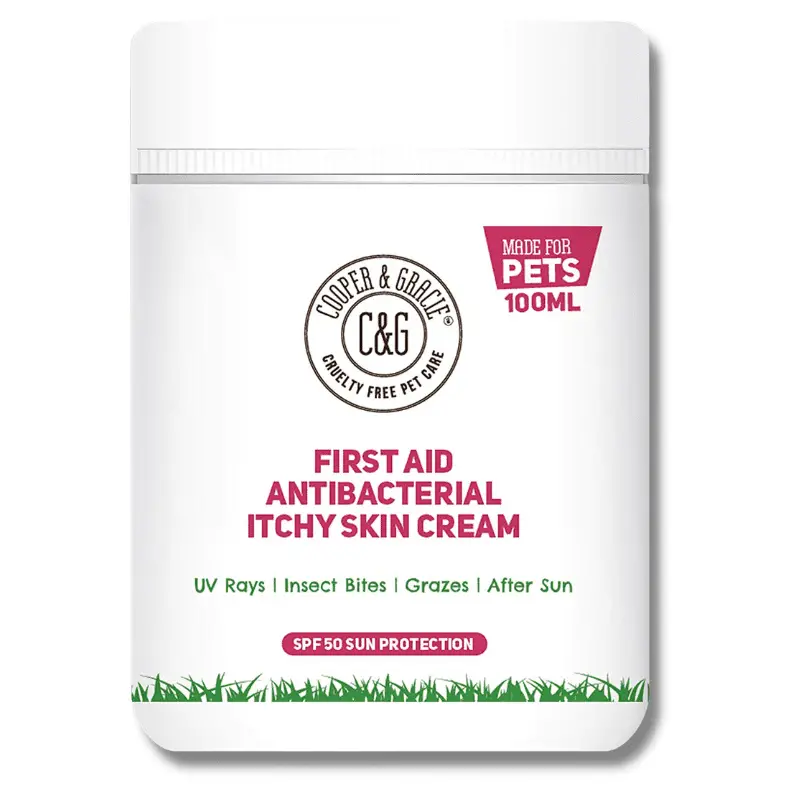You can use Vaseline, a petroleum jelly, to hydrate dry skin. The details provided below will provide you with all the information you need to determine whether it’s safe for your dog.
Yes, vaseline is safe to use on dogs. But before using it, you should be aware of a few things. For instance, if your dog has a propensity for chewing or self-licking, how much you use, and where you place it. The following will demonstrate the ideal methods for applying vaseline to dogs.
One advantage of using petroleum jelly as a barrier against bacteria or other microbes on skin surfaces is one of the advantages of using vaseline. In addition to this, one significant application is the ability to treat dry skin.
The skin of a dog may be flaky and dry or appear oily. This is a typical reaction to a variety of environmental factors, including temperature, humidity, and the type of coat that your pet has. Dogs’ skin can stay healthy with the help of the petroleum jelly-based ointment known as Vaseline. It can retain moisture in a dog’s skin to promote natural healing. Additionally, it shields it from the cold and wind, which makes its skin even drier than usual.
Is Vaseline safe for my dog?
Vaseline is not toxic to dogs, so yes, you can use Vaseline on or around your pets. You might be put off by the fact that it’s a byproduct of the oil industry and is made from processing oil (petroleum), but it’s still safe as a topical for pets. Most commonly, Vaseline is used to protect dogs’ paws Trusted Source American Society for the Prevention of Cruelty to Animals (ASPCA) Nonprofit organization dedicated to preventing cruelty to animals. Go to source or cracked noses in cold weather and might even be helpful when trying to heal a wound. Trusted Source American Kennel Club (AKC) Registry of purebred dog pedigrees. Go to source
Vaseline is safe to use on your dog’s paws or nose if you need to use it quickly and have some on hand. However, there are better options available, such as balms made especially for dogs.
Tips for using Vaseline on your dog’s cracked and dry paws
Vaseline should be applied with a little caution because it can be messy and your dog might be tempted to lick it off. When using Vaseline to treat your dog’s paws, remember to:
Remember: A little Vaseline goes a long way and only apply a thin layer of it. Avoid glopping on Vaseline when coating your dog’s paw pads because your dog might track it all over your house.
Advice: To prevent slips and falls, make sure to clean up any paw prints or spills on wood floors as Vaseline can make them slippery.
If you don’t want your dog to track Vaseline all over your floors, think about applying the Vaseline outside. If you’re applying it in bad weather before going outside, stay close to the door and go for your walk as soon as you’re finished.
After your dog comes inside from being exposed to the elements, wipe any remaining Vaseline off their paws. For this, you might want to keep a towel or some pet-safe wipes by the door. When you return from a winter walk, you should wipe your dog’s paws to get rid of any ice, snow, salt, or de-icing agents.
Put your dog in booties after applying Vaseline as another method to prevent messes. You would then take off the booties and wipe any leftover petroleum jelly off their paws once the petroleum jelly has dried. You could also use a pair of booties instead of Vaseline to protect your dog’s feet from the elements or to cover a cut or blister while it heals.
Never leave your dog’s booties on for more than an hour. As your dog walks, they may tighten around their ankles, resulting in reduced blood flow, swelling, irritability, and even skin infections.
In a pinch, Vaseline might suffice, but there are better options available, such as dog paw or nose balms, which can help soothe your dog’s dry, cracked skin. Vaseline should also be avoided by dogs who tend to lick excessive amounts of it because doing so can result in stomach problems like vomiting and diarrhea.
Antiseptic Cream Made Specifically For Dogs
alternative dog antiseptic cream available for long-term use I always keep a pot of this cream in my cabinet to use on my dogs because it doesn’t smell bad like some dog creams do.

First-aid antibacterial itchy skin cream with SPF 50 from C&G Pets is made from 100% natural essential oils and maintains cracked itchy skin. It is also lick-safe, non-toxic, non-irritant, and highly absorbent.
FAQ
What happens if my dog eats petroleum jelly?
Since it is merely petroleum jelly, vaseline is safe for dogs to use. However, if your dog consumed a significant amount of Vaseline, this could result in more severe vomiting and diarrhea symptoms. Severe vomiting and diarrhea can lead to dehydration. Dehydration will typically require treatment by your veterinarian.
Can I put Vaseline on dog wound?
First, apply Vetericyn Plus Wound Cleanser to the dog’s wound; avoid using petroleum jelly or other oil-based ointments. The detachable hair that might otherwise adhere to the open sore will be easier to remove with the help of a suitable cleanser.